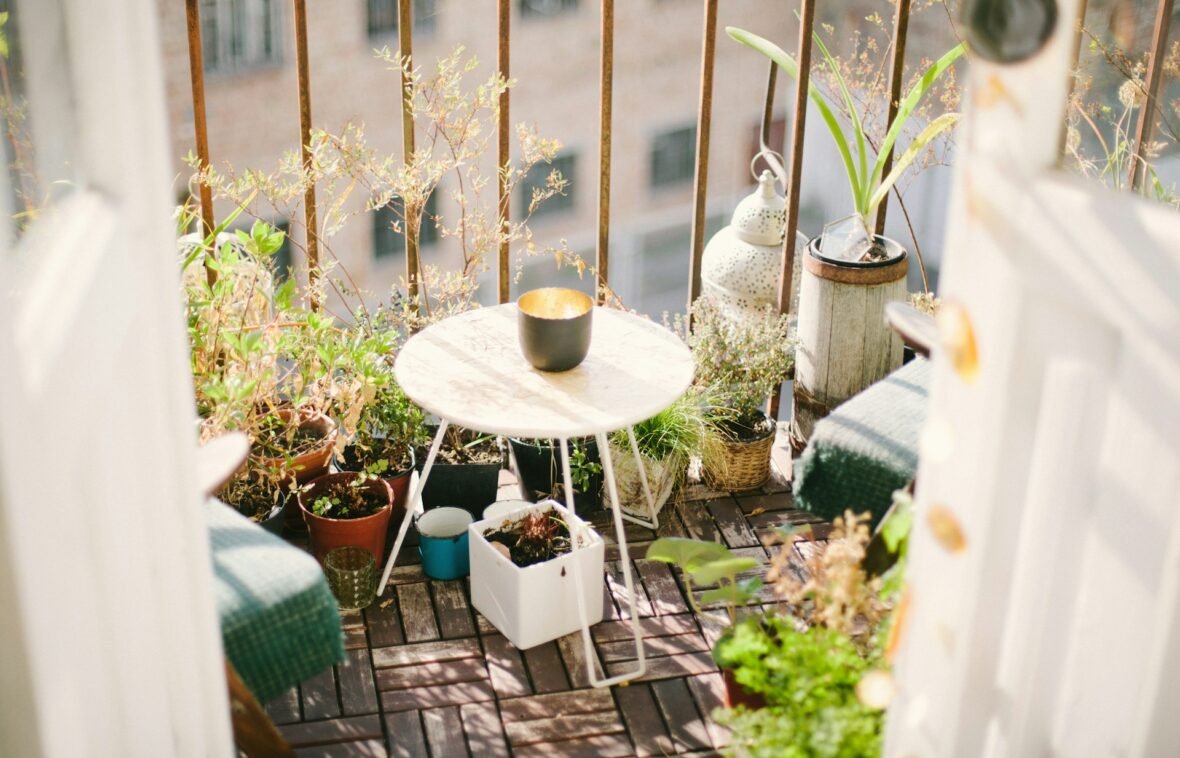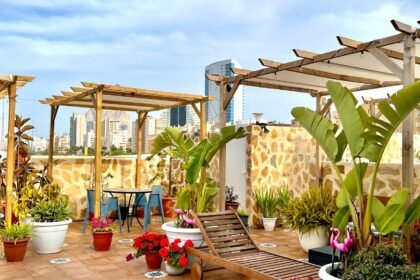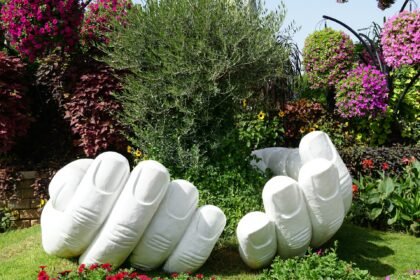Balcony gardening is an excellent option for maximizing limited spaces. With rising urbanization and an increasing number of people living in apartments, the desire to create green spaces within these constraints has gained traction. Container gardening offers a practical solution, allowing renters and homeowners to grow a variety of plants with minimal footprints. This approach not only enhances the aesthetic appeal of balconies but also promotes eco-friendly gardening practices.
The growing popularity of balcony gardening can be attributed to several factors. For one, many people long for a connection to nature, which can often be elusive in densely populated areas. Engaging in balcony gardening provides an opportunity to transform a boring outdoor space into a vibrant garden oasis. Nurturing plants has numerous mental health benefits, from reducing stress to boosting overall well-being, promoting a sense of tranquility.
Using container gardening techniques allows gardeners to creatively utilize their small spaces while enjoying the satisfaction of growing their own herbs, vegetables, and flowers. Various containers, ranging from traditional pots to recycled materials, can all be incorporated. By embracing balcony gardening, urban residents can also contribute to food security by cultivating their own fresh produce, which is particularly helpful when supply chains are disrupted.
Furthermore, balcony gardens can enhance the environment. They provide habitats for useful insects, improve air quality, and promote biodiversity. Through careful planning and an understanding of the unique conditions balconies present, anyone can start gardening. Below, we’ll explore some creative gardening ideas to get you inspired.
Choosing the Right Containers for Balcony Gardening
When embarking on the journey of balcony gardening, selecting the right containers plays a crucial role in achieving a thriving garden. The choice of materials is essential as it not only impacts the growth of your plants but also the aesthetic appeal of your outdoor space. Common materials include ceramic, plastic, and wood, each offering unique benefits. Ceramic pots, while visually appealing, retain moisture well but can be heavy. Plastic pots are lightweight and versatile, making them suitable for various types of plant gardening, especially for those new to balcony gardening. Wood containers, on the other hand, can provide excellent insulation for plant roots, promoting healthier growth in an eco-friendly gardening approach.
Furthermore, the size and shape of containers are significant factors to consider. For example, taller pots can accommodate deep-rooted plants or vegetables, whereas shallower pots are ideal for herbs and smaller flowering plants. Taking advantage of vertical gardening techniques using shelves or hanging containers can also maximize your small space gardening potential, creating a lush environment even in limited areas. This creates not only opportunities for herb gardening and flower gardening but also allows for the cultivation of a variety of vegetables.
Drainage considerations cannot be overlooked in any container gardening endeavor. Ensure that your selected pots have adequate drainage holes to prevent waterlogging, which can lead to root rot. Adding a layer of gravel at the bottom of the container can enhance drainage and promote healthy plant development. With so many creative gardening ideas available, the right container can genuinely transform your balcony space into an inviting and productive area. Embracing these aspects will not only support your gardening efforts but contribute positively to your mental health benefits and food security efforts as well.
Selecting the Right Plants for Balcony Gardening
When embarking on a container gardening journey, particularly in a balcony setting, the most crucial aspect is selecting appropriate plants that will thrive in confined spaces. Factors such as sunlight exposure, climate, and maintenance needs play significant roles in the overall success of your balcony garden. For beginners, understanding these factors can enhance the gardening experience and yield positive results.
Start by assessing the sunlight conditions of your balcony. Most plants can be categorized based on their light requirements: full sun, partial shade, or full shade. If your balcony receives a significant amount of direct sunlight, consider growing sun-loving vegetables such as tomatoes and peppers, or vibrant flowers like marigolds and geraniums. Alternatively, for balconies that receive minimal sunlight, herbs such as mint and parsley or shade-tolerant flowers like impatiens may be ideal choices. By selecting plants that align with the available sunlight, you can ensure a flourishing outdoor gardening experience.
Climate is another essential factor determining plant selection. Consider your local climate conditions, including temperature fluctuations and humidity levels. For example, if you reside in a warmer climate, drought-resistant plants like succulents or drought-tolerant herbs like rosemary can thrive with minimal watering, making them suitable for eco-friendly gardening practices. Similarly, individuals in cooler climates should opt for hardy vegetables like kale and root vegetables that can withstand lower temperatures.
Maintenance needs must also be considered, particularly for those engaging in balcony gardening for beginners. Low-maintenance plants such as succulents and certain herbs require less frequent watering and are less demanding in terms of upkeep. Flower gardening enthusiasts may opt for perennial flowers that return year after year, while vegetable gardening aficionados can select varieties that are easy to grow in containers, such as lettuce and radishes. By diversifying plant selections, your balcony can become a vibrant oasis that supports food security and enhances mental health benefits through the act of nurturing and observing plant growth.
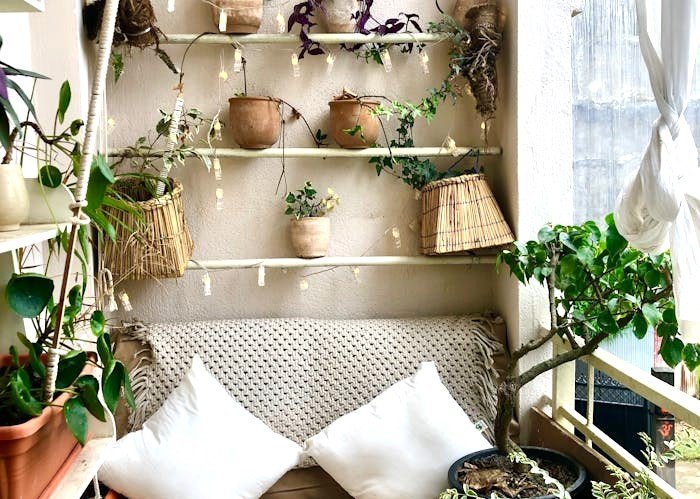
Vertical Balcony Gardening Ideas for Limited Space
In urban environments, where outdoor gardening space is often at a premium, container gardening can be a practical solution. Vertical gardening presents an innovative way to maximize limited areas on small balconies while creating an appealing garden aesthetic. By utilizing vertical space, you can enjoy the benefits of herb gardening, flower gardening, and vegetable gardening, all while contributing to food security.
Wall planters are an excellent starting point for balcony gardening for beginners. These planters can be attached to walls or fences, allowing you to grow a variety of plants, including herbs or even small vegetables, in a manner that utilizes vertical surfaces effectively. Hanging pots also create a dynamic visual display and can be arranged at various heights to add depth to your container gardening. This method not only beautifies your outdoor space but also enables efficient use of small areas.
Trellises can elevate your gardening experience by providing a structured way for climbing plants to thrive. By training plants such as beans, peas, and cucumbers to grow upward, you can create a lush green environment without compromising floor space. This technique is particularly effective in balcony gardening and can help transform plain balconies into vibrant green retreats.
In addition to aesthetics, vertical gardening offers various mental health benefits; interacting with plants can reduce stress and promote well-being. Furthermore, incorporating eco-friendly gardening practices by selecting organic soil and natural fertilizers contributes to environmental benefits, enhancing the sustainability of your outdoor gardening efforts.
Ultimately, adopting creative vertical gardening ideas can transform limited spaces into productive and inviting areas. By employing these techniques, you can grow a delightful garden, be it for herbs, flowers, or vegetables, and enjoy the myriad advantages that container gardening offers, even in an apartment setting.
Creating a Themed Container Garden
Container gardening on balconies offers a unique opportunity to express creativity through themed plant arrangements. By selecting specific design themes, gardeners can create visually appealing and cohesive spaces that enhance the enjoyment of outdoor gardening, even in limited areas. Various themes can inspire the plant choices, color schemes, and layout options available, leading to creative gardening ideas that cater to personal preferences and available space.
One popular theme is the Mediterranean garden, which evokes the sun-soaked beauty of Southern Europe. This theme typically features plants such as lavender, rosemary, and olive trees, which thrive in sunny conditions and require minimal water, making them ideal for eco-friendly gardening practices. Utilizing terracotta pots and natural stones in the layout can further enhance the Mediterranean aesthetic.
For those seeking a more exotic atmosphere, a tropical container garden presents vibrant options. Incorporating plants like hibiscus, ferns, and palm varieties can create a lush environment filled with rich colors and textures. When arranging your plants, consider mixing heights and layering for depth, while utilizing bold, colorful pots to enhance visual appeal.
Herb gardening is another great theme for balcony creators, particularly for those interested in maintaining a fresh supply of culinary herbs. Pots of basil, mint, and cilantro can be arranged systematically or grouped loosely for a more casual look. This not only provides a resource for home meals but also contributes to food security and sustainability practices. Combining different herbs can help in creating pleasing arrangements while reaping the benefits of growing one’s own food.
Ultimately, whether you opt for Mediterranean, tropical, or herb gardening, embracing a specific theme allows for creative expression while maximizing the potential of small space gardening. Taking into account plant compatibility, sunlight requirements, and personal aesthetics can lead to a flourishing balcony garden that showcases individual style and enhances living spaces.
Color Combinations and Plant Pairings
Color coordination in container gardening is essential for creating visually appealing arrangements on your balcony. By selecting complementary colors and contrasting plants, you can enhance the aesthetic appeal of your small space gardening efforts. Start by considering the color wheel; using colors that are opposite each other can create striking contrasts, while analogous colors—those next to each other on the wheel—yield a more harmonious look.
For instance, pairing deep purple petunias with bright yellow marigolds can produce a bold statement in your outdoor gardening arrangements. Alternatively, softer combinations such as pastel pink geraniums with white lobelias promote tranquility, which may benefit your mental health and create a serene environment. When selecting plants, consider their growth habits and requirements, as some may thrive together while others may compete for space and resources.
In addition to aesthetic considerations, it’s vital to choose plants with similar care requirements. For balcony gardening, try planting herbs, such as basil and parsley, alongside flowering plants like nasturtiums. They not only complement each other visually but also contribute to eco-friendly gardening practices by attracting beneficial insects. Vegetable gardening enthusiasts might opt for a combination of tomatoes and marigolds, as the latter acts as a natural pest deterrent, ensuring a healthy crop.
Furthermore, when it comes to creative gardening ideas, think about incorporating trailing plants such as ivy or sweet potato vines with upright flowers like zinnias or sunflowers. This layering of height adds dimension to your balcony garden while maximizing your space’s potential. Remember to adjust your choices according to the available sunlight, as each plant has its unique light requirements, ensuring a thriving little garden oasis right at your fingertips.
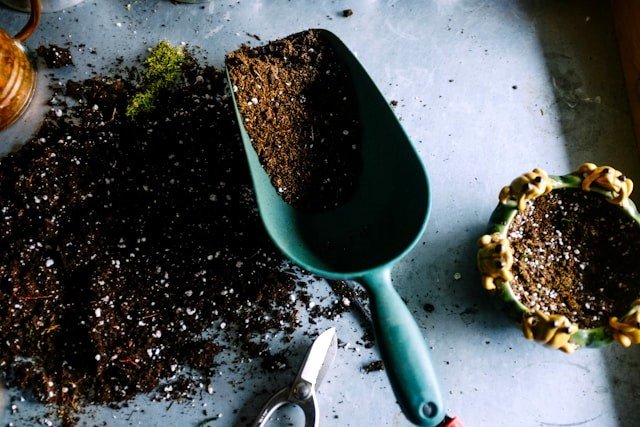
Maintenance Tips for Thriving Balcony Gardens
Maintaining a vibrant balcony garden requires an understanding of a few essential practices that ensure your container gardening flourishes. One of the primary aspects to focus on is watering. Balcony gardens often suffer from rapid drying due to wind and sun exposure; therefore, regular monitoring of soil moisture is crucial. It is advisable to check the top inch of the soil—if it feels dry, it’s time to water. Ideally, water in the early morning or late afternoon to prevent evaporation and give plants sufficient time to absorb moisture.
Equally important is fertilizing. Plants in pots depend entirely on you for nourishment as they cannot access nutrients from the ground. Use an organic, slow-release fertilizer suited for the specific type of plants you are growing, whether they are herbs, flowers, or vegetables. Regular feeding, typically every four to six weeks, will promote healthy growth and productivity in your balcony garden.
Pruning is another critical maintenance task. Regularly removing dead or yellowing leaves keeps your plants healthy, and trimming back overgrown stems encourages new growth. This practice is particularly beneficial in dense setups typical of small space gardening on balconies. Additionally, keep an eye out for any signs of pests or diseases. Employ eco-friendly pest control methods, such as neem oil or insecticidal soap, to tackle unwanted visitors without harming the environment.
Lastly, regularly monitor the health of your plants. Look out for changes in color, wilting, or growth stagnation, which could signal underlying issues. By following these maintenance tips, you will not only ensure that your balcony garden thrives but also enjoy the mant mental health benefits and environmental benefits that gardening can bring.
Seasonal Balcony Gardening Ideas for Year-Round Enjoyment
Container gardening offers an ideal solution for balconies, allowing urban dwellers to transform their limited spaces into vibrant, seasonal gardens. One of the most rewarding aspects of balcony gardening is the opportunity to adapt your plant selections and arrangements according to the changing seasons. This approach not only beautifies your space but also enhances the mental health benefits associated with nurturing plants.
In spring, consider planting colorful annuals and perennials that thrive in moderate temperatures, such as pansies, petunias, and snapdragons. These flowers not only create a cheerful display but also attract pollinators, contributing to environmental benefits. You can also start a herb garden by introducing varieties like basil, parsley, and chives, which flourish in the warm sun of the season.
As summer arrives, you can shift focus to vegetable gardening, utilizing your containers to grow crops such as tomatoes, peppers, and cucumbers. These vegetables require ample sunlight and can be strategically arranged to maximize space. To create an inviting outdoor gardening atmosphere, consider incorporating creative decorations like string lights or colorful plant markers that reflect the vibrant spirit of the season.
Autumn brings a transition where ornamental cabbages and kales can be highlighted. These hardy plants not only withstand cooler temperatures but also provide visual interest as the foliage changes color. Additionally, you might harvest any late-summer vegetables you’ve cultivated, ensuring robust food security for your household.
Finally, winter container gardens can be enchanting with the right selection of evergreen plants and winter flowers like hellebores. Utilizing decor, such as fairy lights or winter-themed ornaments, can further enhance the ambiance. By understanding how to grow a garden on a balcony across seasons, container gardening can provide continual enjoyment and satisfaction throughout the year.
DIY Projects for Personalized Container Garden Decor
Creating a unique and personalized container garden can be a rewarding journey, particularly when it allows for self-expression and creativity. For those engaged in balcony gardening, DIY projects provide an excellent opportunity to enhance your outdoor gardening experience. One popular idea is custom-painted pots. You can transform plain terracotta pots into vibrant, artistic displays by using acrylic paints or outdoor spray paints. Consider painting them with patterns, inspirational quotes, or even an intricate mural that reflects your personality or interests. This simple project not only beautifies your garden but also provides therapeutic benefits, as painting can significantly reduce stress.
Another innovative approach is utilizing upcycled materials for planters. Common household items such as old wooden crates, tin cans, or even plastic bottles can be easily converted into charming planters. For instance, you can create a vertical garden using old wooden pallets or hang tin cans filled with herbs and flowers along your balcony railing. This not only adds visual interest but also promotes eco-friendly gardening practices. By repurposing materials, you contribute to food security and sustainability while minimizing waste, making your small space gardening efforts more impactful.
You may also want to explore unique watering systems which can simplify the maintenance of your container garden. A simple DIY drip irrigation system using a recycled plastic bottle can ensure that your plants receive consistent hydration. Cutting a bottle and placing it upside down in the soil will allow slow water release, which is especially beneficial for herb gardening and vegetable gardening. With these creative gardening ideas, you not only personalize your balcony space but also make it functional and sustainable.
By engaging in these DIY projects, balcony gardening becomes much more than a hobby; it transforms into an artistic expression, enhancing both your mental health and the beauty of your outdoor environment.

